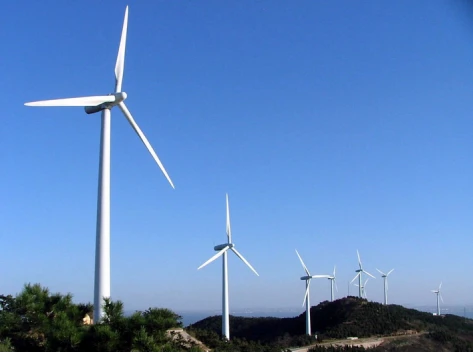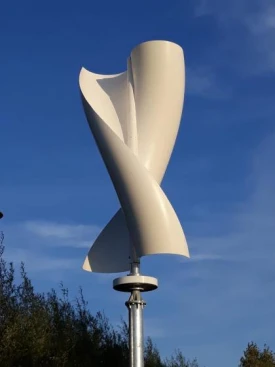
-
Permanent Magnet Motor
-
Wind Turbines
-
Permanent Magnet Drive
-
Service Support
-
About Hiest
-
News
The first instance of using wind power to operate boats dates back to 5000 BC, used by the people of the river Nile. Eventually, the use of wind turbines and windmills for pumping water and food production spread all over the world. With environmental sustainability becoming a huge cause of global concern, wind turbines are a great option for renewable sources of energy generation.
Development history of Wind Turbines in the field of New Energy
With rural electrification in the 1930’s, the use of wind turbines was reduced. However, the oil shortage in the 1970’s, once again led to the increased use of wind energy to create electricity.
In 1975, a NASA-based program was commenced to build utility-scale wind turbines. By the 1990s, the U.S. federal government started encouraging the use of sustainable energy sources. Thousands of wind turbines were installed in California with incentives and funding from the government to support green power.
European nations and other countries across the globe have heavily invested in wind turbine power. China today is the largest generator of electricity from wind energy using wind turbines.
The Composition of HAWT and VAWT
Horizontal Axis Wind Turbine or HAWT
The horizontal axis wind turbine consists of a rotor that is positioned perpendicular to the wind . The main rotor shaft and the electrical generator are located at the top of the tower. It is usually equipped with a gearbox that converts the slow speed of the rotor into a quicker rotation, suited to drive an electrical generator.

Vertical Axis Wind Turbines or VAWT
The VAWT comprises the blade, shaft, bearing, frame & blade support. It has a rotor shaft and two or three blades where the rotor shaft moves vertically. In this turbine, the main components, namely thegenerator and gearbox are placed at the bottom of the towe

VAWT & HAWT: Differences and Advantages
The HAWT has a high power coefficient and low cut-in wind speed. They work best when the wind flows at the right angle.
The VAWT blades rotate perpendicular to the ground and hence can convert wind from 360 degrees. Due to their axis structure, they are not very dependent on wind speed and direction.
While HAWTs have high production capacities, they are expensive and work best only in open areas. On the other hand, VAWT is a great choice for suburban and urban areas. They can be fit in individual homes where wind could be inconsistent. These are also suitable atop hills or rooftops that face turbulent winds.
HAWT requires consistent wind speed and direction to operate optimally. Vertical axis wind turbines can operate even in inconsistent, low, or turbulent wind conditions.
Horizontal Axis Wind Turbines require higher maintenance costs while VAWTs are much more economical owing to their structure and size. As the equipment is installed closer to the ground, repairing and maintaining a Vertical Axis Wind Turbine is much easier and cost-effective.
Wrap-up
With a simple, compact, and ergonomic design, VAWT can be installed in places where open spaces are a constraint or the area is more populated. In the case of low-speed winds, Vertical-axis wind turbines work best as they do not need to be oriented repeatedly in the direction of the wind.
Looking for a simple, yet reliable wind turbine?
At Zhuji Hiest Magtech Co., Ltd., we specialize in the research, manufacturing, and sale of a wide variety of cost-effective wind turbines. Connect with us here.







